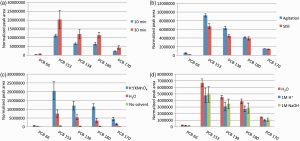 PCB Analysis refers to testing for Polychlorinated Biphenyls (PCBs) – toxic, persistent chemicals that were once commonly used in transformer oil and other electrical equipment due to their chemical stability and non-flammability.
PCB Analysis refers to testing for Polychlorinated Biphenyls (PCBs) – toxic, persistent chemicals that were once commonly used in transformer oil and other electrical equipment due to their chemical stability and non-flammability.
What Are PCBs?
-
PCBs are synthetic organic chemicals with chlorinated compounds.
-
Used in transformer oils, capacitors, and other electrical gear until the 1970s–80s.
-
Banned or restricted in most countries due to their toxic and carcinogenic properties, and because they bioaccumulate in the environment.
Why Test Transformer Oil for PCBs?
-
Regulatory compliance (e.g. EPA, IEC, OSHA)
-
Environmental protection
-
Worker safety
-
Determine disposal method (hazardous or non-hazardous waste)
-
Identify contaminated transformers that need decontamination or replacement
PCB Analysis Methods
| Method | Description |
|---|---|
| Gas Chromatography (GC) | Most common; separates and measures PCB concentrations |
| Gas Chromatography-Mass Spectrometry (GC-MS) | More sensitive; used for very low-level detection |
| Immunoassay (Screening) | Quick field tests; less accurate, used for screening |
| EPA Method 8082A | Standard method for PCB detection in oil samples |
PCB Concentration Levels
| Concentration (ppm) | Classification |
|---|---|
| < 2 ppm | Non-PCB |
| 2 – 50 ppm | PCB-Contaminated |
| > 50 ppm | PCB (hazardous) |
How to Collect Samples for PCB Testing
-
Wear proper PPE (gloves, goggles, protective clothing)
-
Use clean, solvent-rinsed glass bottles
-
Label the bottle clearly (ID, date, location)
-
Take samples from bottom valve or oil sampling port
-
Seal tightly, and send to accredited lab within 48 hours (if possible)
Test Report Includes
-
PCB concentration (in ppm or mg/kg)
-
Analytical method used (e.g. EPA 8082A)
-
Sample ID, source, and date
-
Interpretation (Non-PCB, PCB-Contaminated, or PCB)
If PCB is Detected
-
Equipment may need labeling, decontamination, or special disposal
-
Oil with >50 ppm must be handled as hazardous waste
-
Follow national regulations (e.g. U.S. TSCA regulations, IEC 61619)

